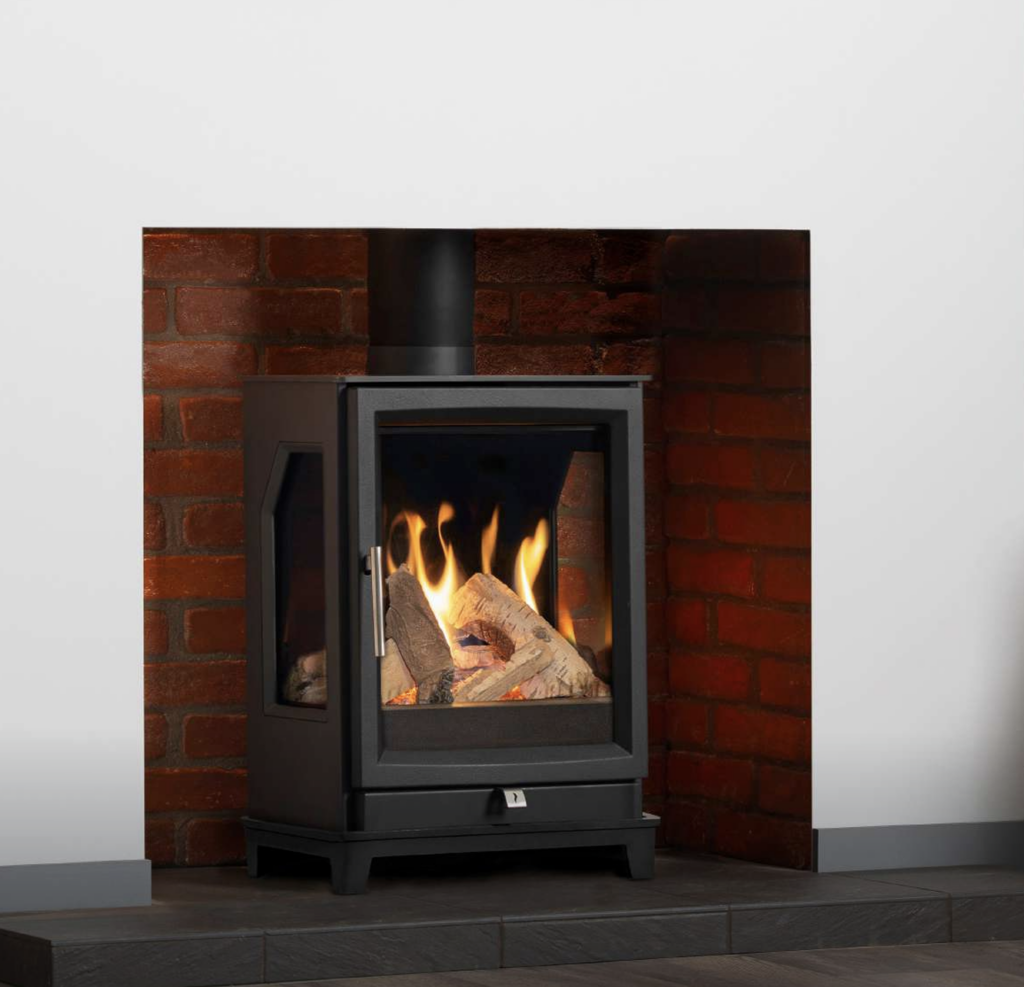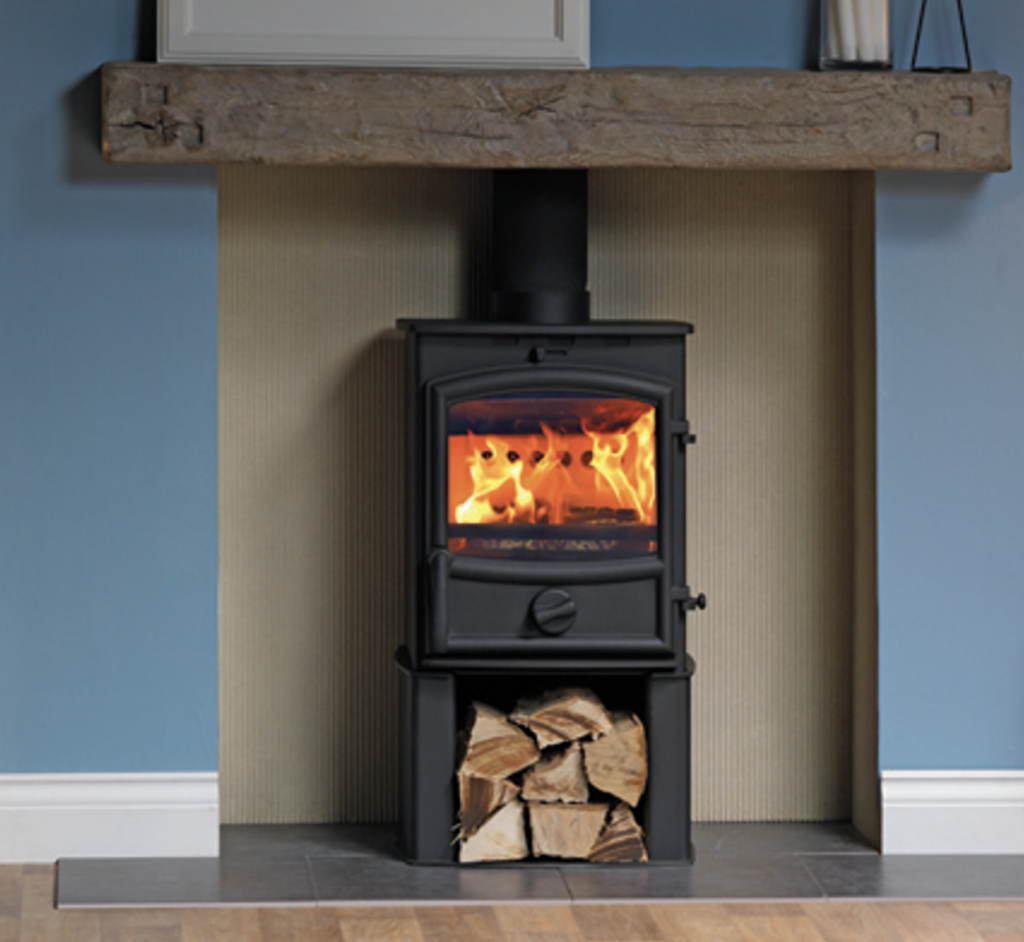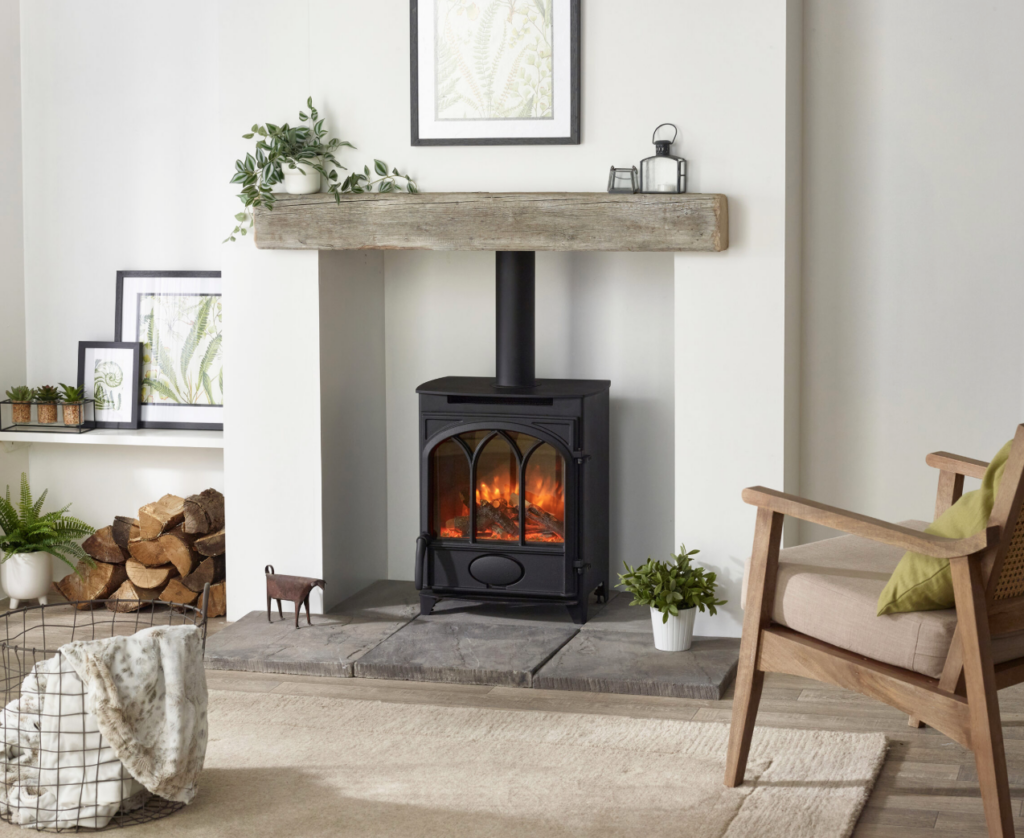Stoves don’t just heat a room — they create an atmosphere. With their timeless design and inviting glow, stoves bring a sense of comfort and warmth, especially on chilly evenings. They’re more than just functional; they often become a standout feature and conversation piece in any living space.
While traditional stoves have typically been wood-burning, modern innovations in design and technology have made gas and electric stoves just as accessible and stylish as their wood-fired counterparts.
Below, we’ve outlined a comparison between wood-burning, gas and electric stoves, highlighting the key differences to help you choose the best option for your home.
Paragon Edge 3S CF Gas Stove:

Environmental Impact – Gas is a fossil fuel, whereas wood, if sourced correctly, is a highly sustainable renewable form of energy. Wood is considered a cleaner fuel than gas, although you may come across a range of inaccurate information in some media outlets that state that burning wood on an Ecodesign stove is not environmentally friendly. This is untrue.
Safety Aspects – You will need your gas stove serviced annually as a minimum. Poorly serviced gas appliances can be deadly. However, when they are working as intended, they are generally very safe. They also have safety features such as flame failure detectors, oxygen sensors and room temperature control. Wood-burning stoves are a little different – and simpler in some elements. They won’t need to be serviced in the same way a gas stove would. However, the primary safety issues with wood come when lighting and filling the stove when lit – there can be a risk of smoke entering a room. Furthermore, sparks and embers can also leave the stove when the door is opened, which you need to be aware of and guard against. Wood-fired is more manual and takes more skill and experience to perfect, whereas gas is more switch on and enjoy!
Fireline FX4 Wood-Burning Stove:

Cost Considerations – The cost of a wood-burning stove vs a gas stove varies hugely. Some gas stoves will be cheaper than a wood stove and vice-versa. A good idea is to have a budget in mind and then, if you’re undecided if you want a gas or wood stove, look at what is available within your budget – quite often, you will reach a decision very quickly using this approach, as you will be eliminating any stoves which are not in your price range. Be aware of fitting costs and any adjustments needed to your property; these can push the price up. Your local showroom will be able to advise on this during an initial survey. Once a survey is complete, you will have a good idea of total costs.
Aesthetic Value – One of the reasons people buy stoves is for the way they look, and also the way they sound – especially so for wood-burning stoves, the pop and crackle of wood as it burns, and of course, the aroma as the wood burns is, for some, enchanting. You don’t tend to smell as much as an open fire – which is a good thing. But when you open the door to add firewood, you will notice a distinctive aroma. While a gas stove can emulate the look of a traditional wood-burning stove, it can’t match the sound or smell, and for some that’s fine – especially so if all they want is the distinctive stove visual experience.
3D Ecoflame Electric Stove (The Alcaston):

Environmental Impact – It depends on how the electric is generated. If it’s from a renewable source, then you are really on to a winner. At the point of use, there are zero emissions with an electric stove.
Costs – Electric stoves are much easier to fit, which means fitting costs are either zero or very low. Also, there is no annual servicing required with electric, which again helps with costs. They are not as complex as a gas fire, which also drives down costs.
Aesthetic Value – An electric stove will not have the real flames which come as standard with a wood or gas stove. However, design advancements mean they look great. Maybe not as great as gas or wood, but this can be easy to overlook for the low emissions and sheer convenience of electric.
Have you decided? It can take time to decide if you should have a wood, gas or electric stove if you’re undecided. By visiting a local showroom, you will be able to see them close up and discuss your options with a specialist. For some, there is no question; it’s wood or gas, or maybe electric. But for others, it’s much harder! Take your time and discover what stove is ideal for you, your home, your budget and your circumstances.
Find a local showroom here.








